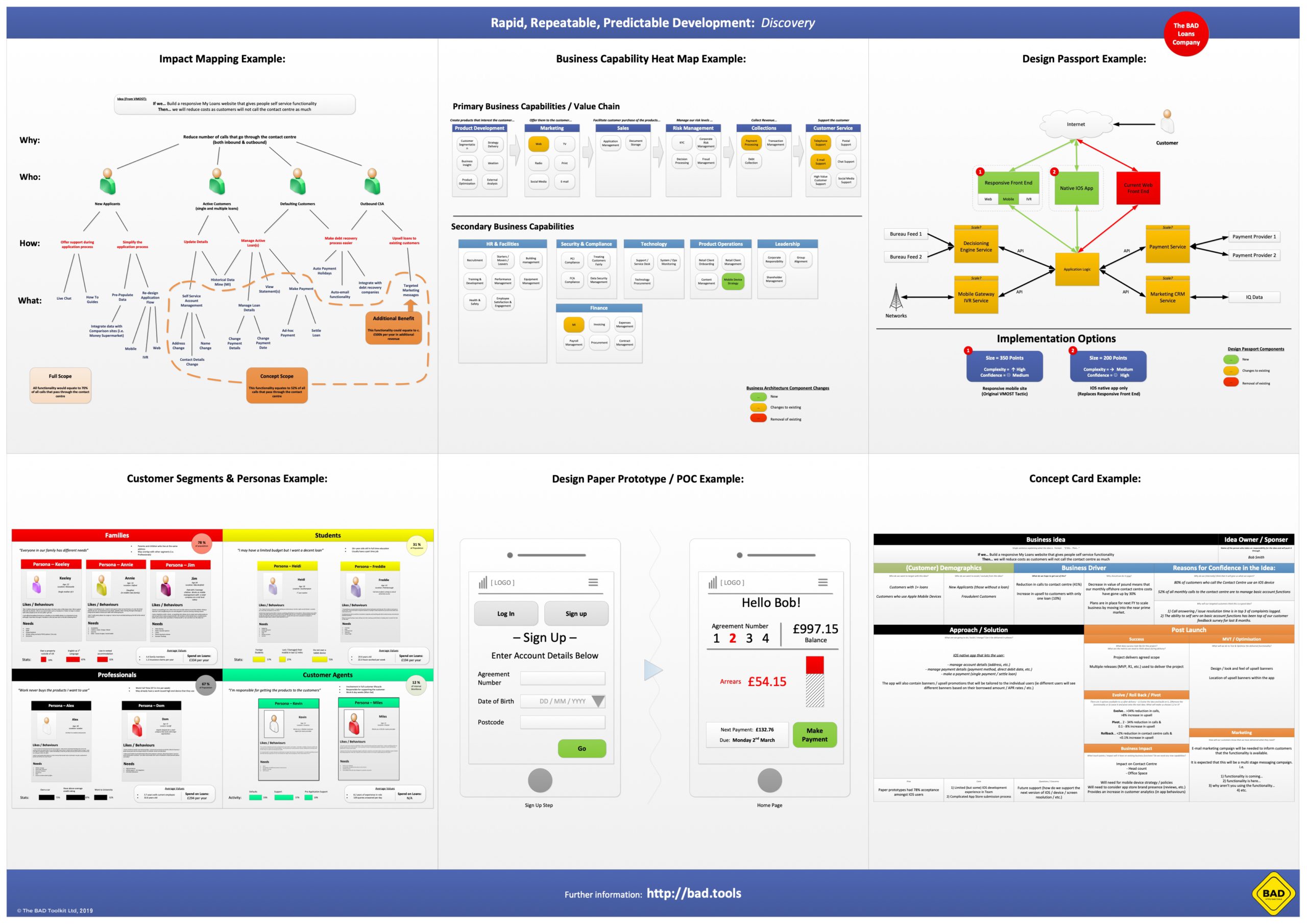
The Concept
Before spending time and money building the product, the team spend 5 days focusing on turning the idea into a viable concept. This is avoids the building of pre-determined solutions and ensures that the Product Owner gets early feedback on the idea from end users.
During this stage they identified what the problem is, what alternatives there may be, what are the benefits and what is the impact to both the business and the technology estate.
Looking at these at a high level lets the team revise the cost / benefit with a increased level of confidence.
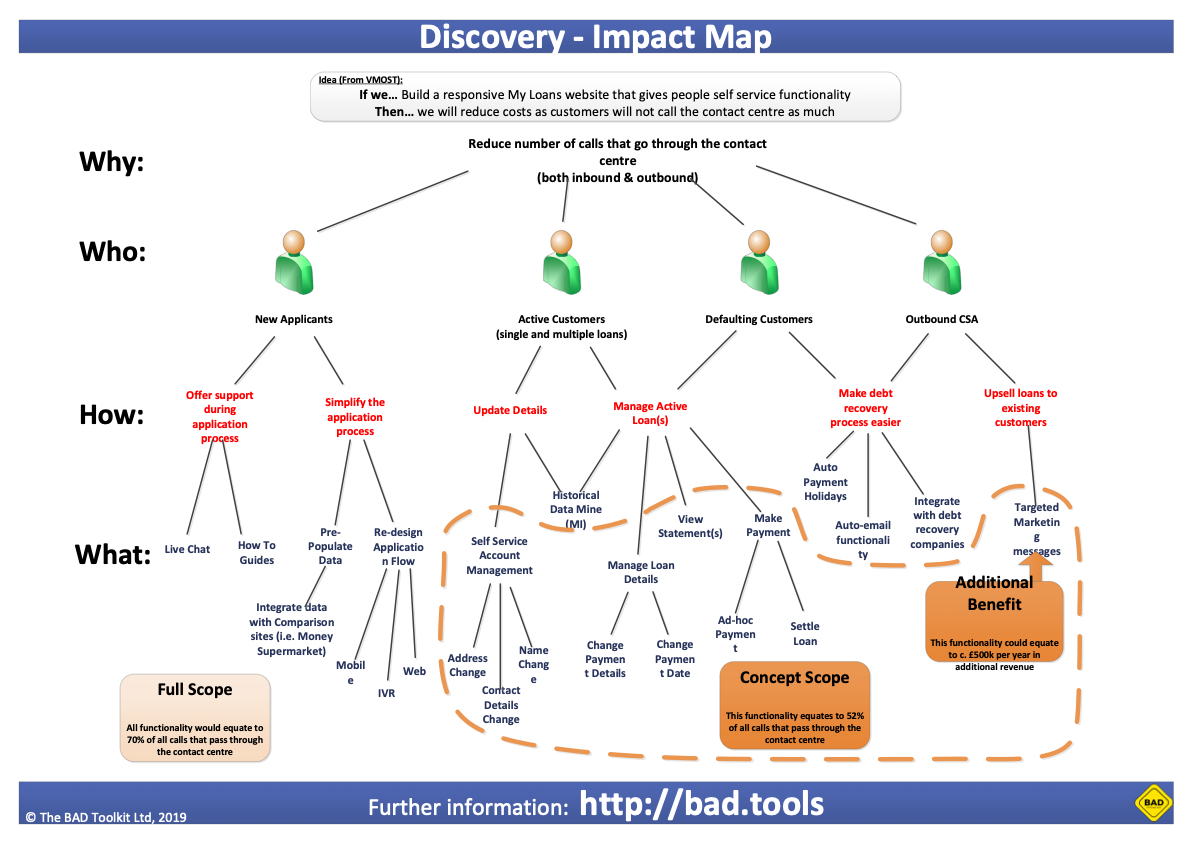
Defining the Concept
Identifying the proposed scope of the concept is critical to ensuring we get the correct feedback from the end customer.
Impact mapping is used to In order to rapidly define the functional scope and helps us answer such questions as “Why build this?”, “What functionality is needed to deliver the goals?” and “How are the actors impacted by the solution”.
Impact mapping is rapid and it takes a team a mater of hours to agree on the key features in scope for the concept.
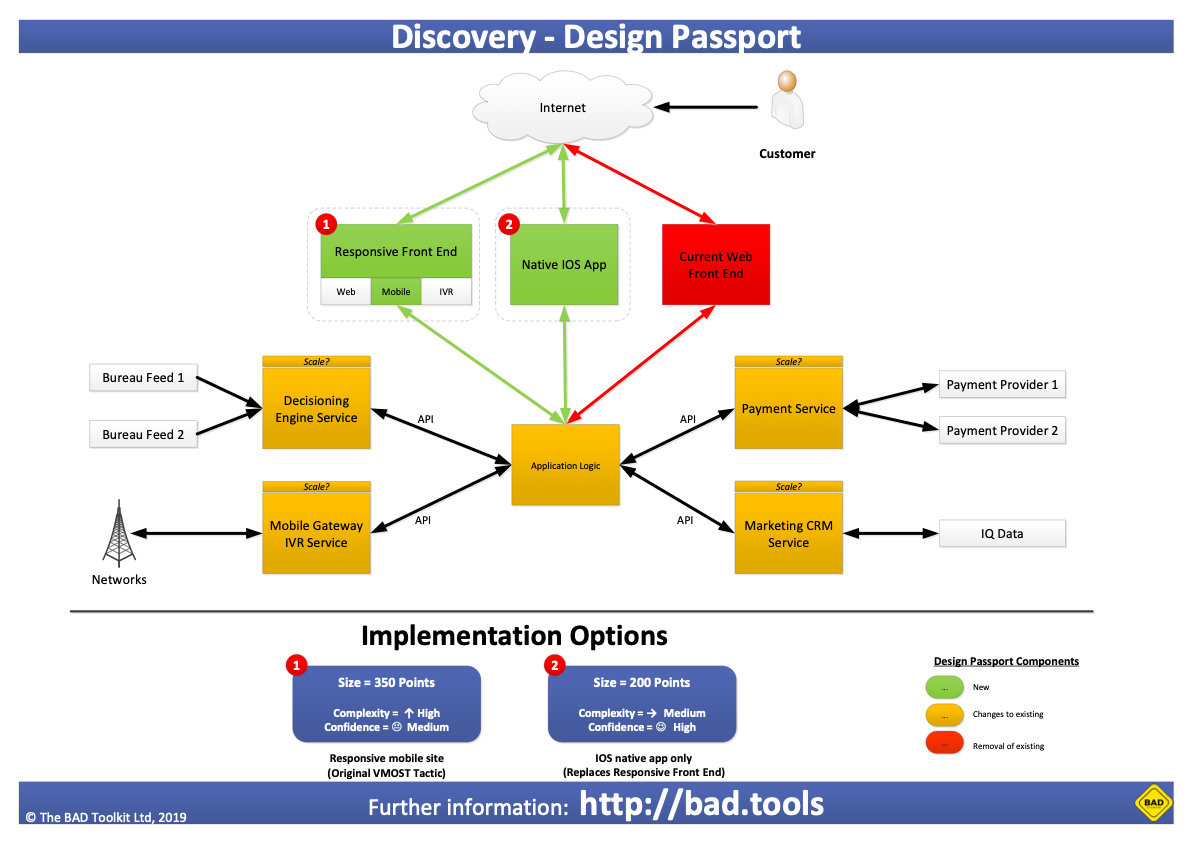
Technical Impact
Once we have the expected scope, we can do a rapid assessment on which aspects of the technical estate will be impacted by any changes we implement.
To do this we use a high level Technical City Plan, or design passport, to identify the current landscape and overlay it with areas that are; changed, removed or new.
Different technical solutions can be represented, along with a more refined ROM estimate – as shown here were we can either build a responsive front end solution or a native IOS app.
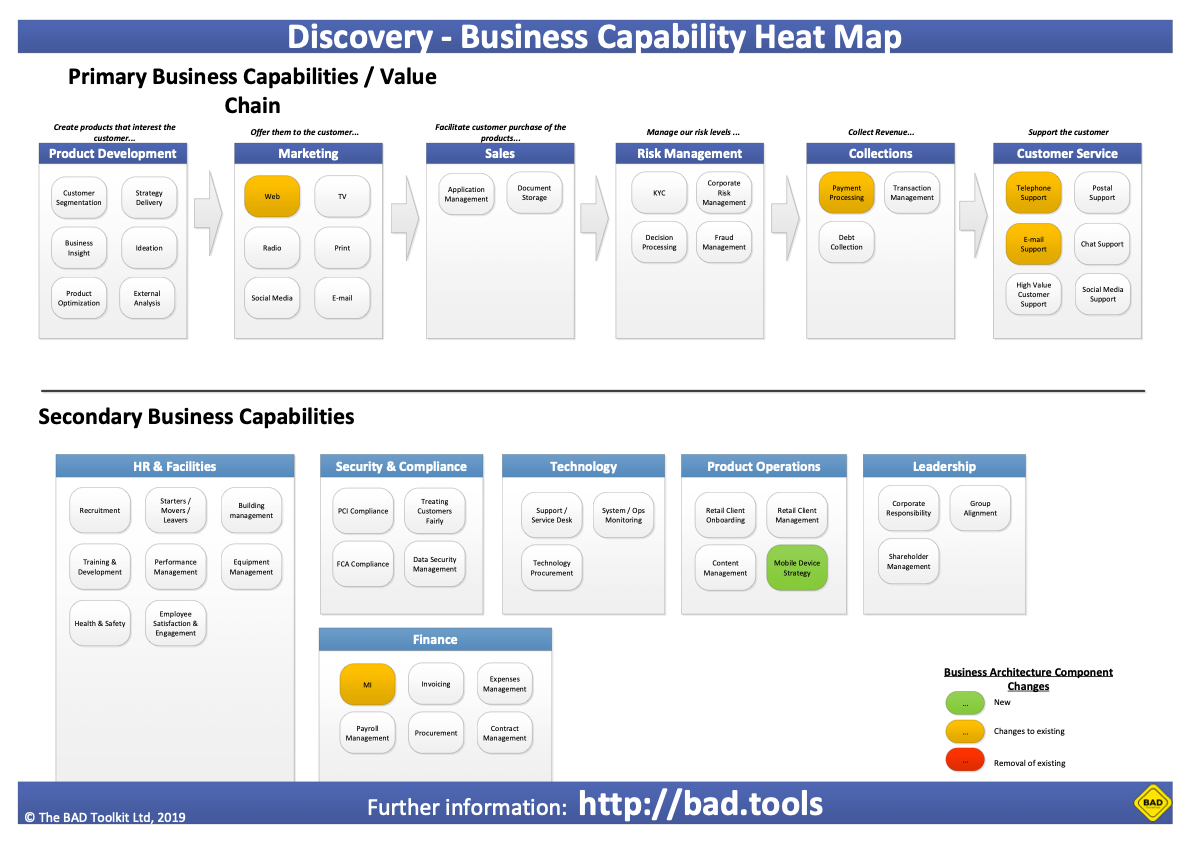
Business Impact
In addition to assessing the technical impact, during the concept validation stage we also look at the high level impact across the business estate.
In this stage we use a business capability model for the organisation and again overlay it with the areas that will need to be; created, changed or depricated in order to deliver the concept.
This allows us to rapidly assess how much change the organisation will need to go through, and the areas of likely impact when assessing the idea.
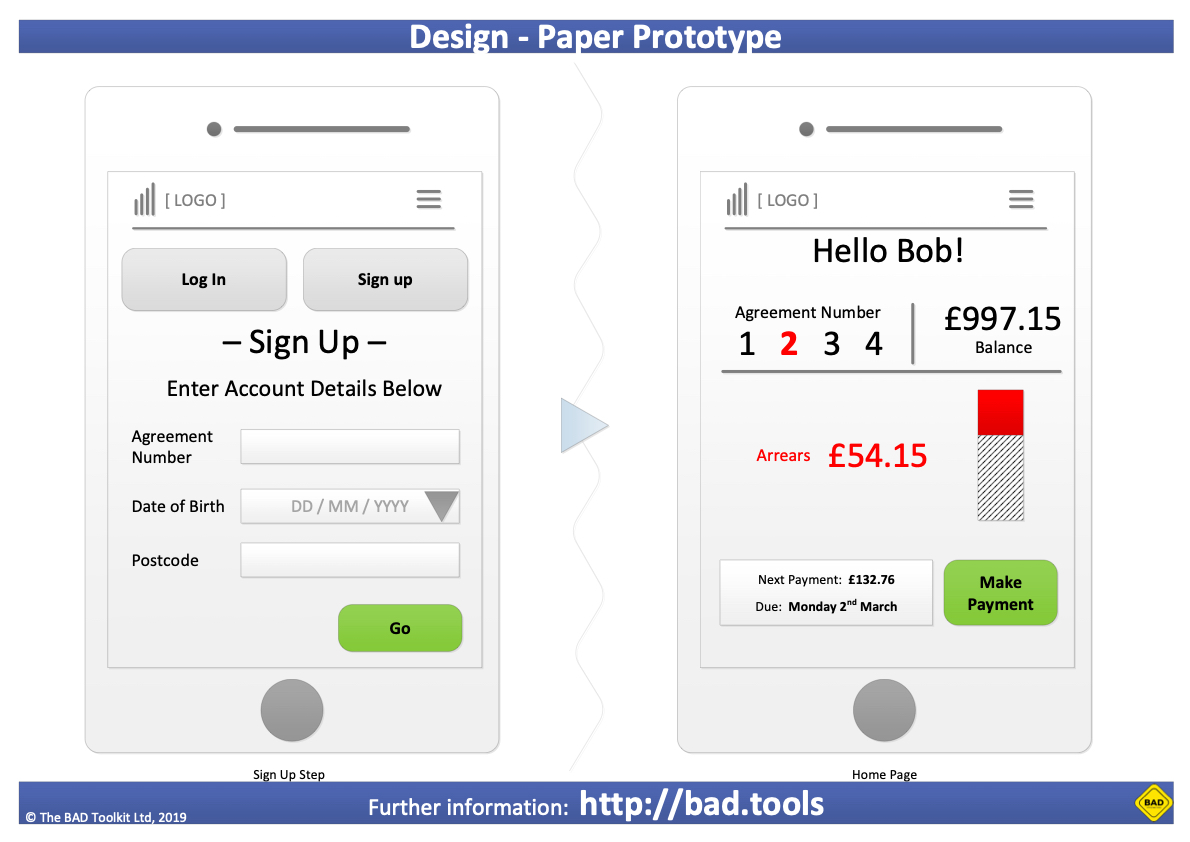
The Prototype
In order to allow the customer to feedback on the concept we may create a paper prototype for them to understand the functionality that we are proposing in the concept.
This is intentionally low res as we’re interested in the viability of the solution rather than details of the asthetics of the design.

Customer Feedback
Our customers are jointly owned by marketing and customer services.
Our Customer Services Team find that customers are vocal in telling us what they would like to see and what is not working well for them. Sometimes this is direct feedback, however often is public via social media.
We also have some customer segmentation to show which customers are most valuable to us and marketing have previously worked with a external consultancy to identify what “typical” customers from each customer group would look like. This is only used to help with our brand marketing campaigns and is not utilised elsewhere in the organisation.
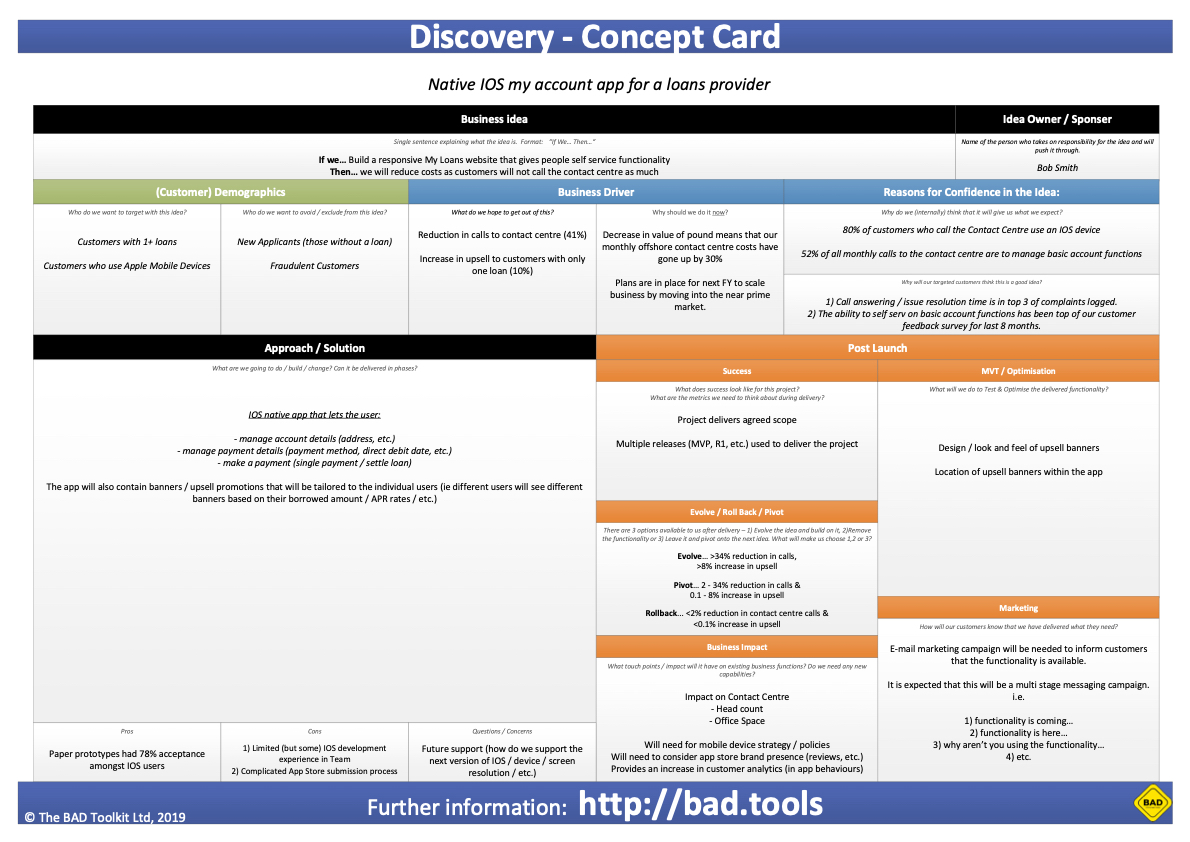
Concept Summary
Finally, we sumarised the output of the sessions into a single one page overview showing what the concept is, why it is important, what the high level impact is, and what customer sentiment would be to the solution.
This let us created a revised Cost and Benefit estimation that we could use to generate a “Go” or “No Go” decision ahead of the next stage of the process – Inception.
